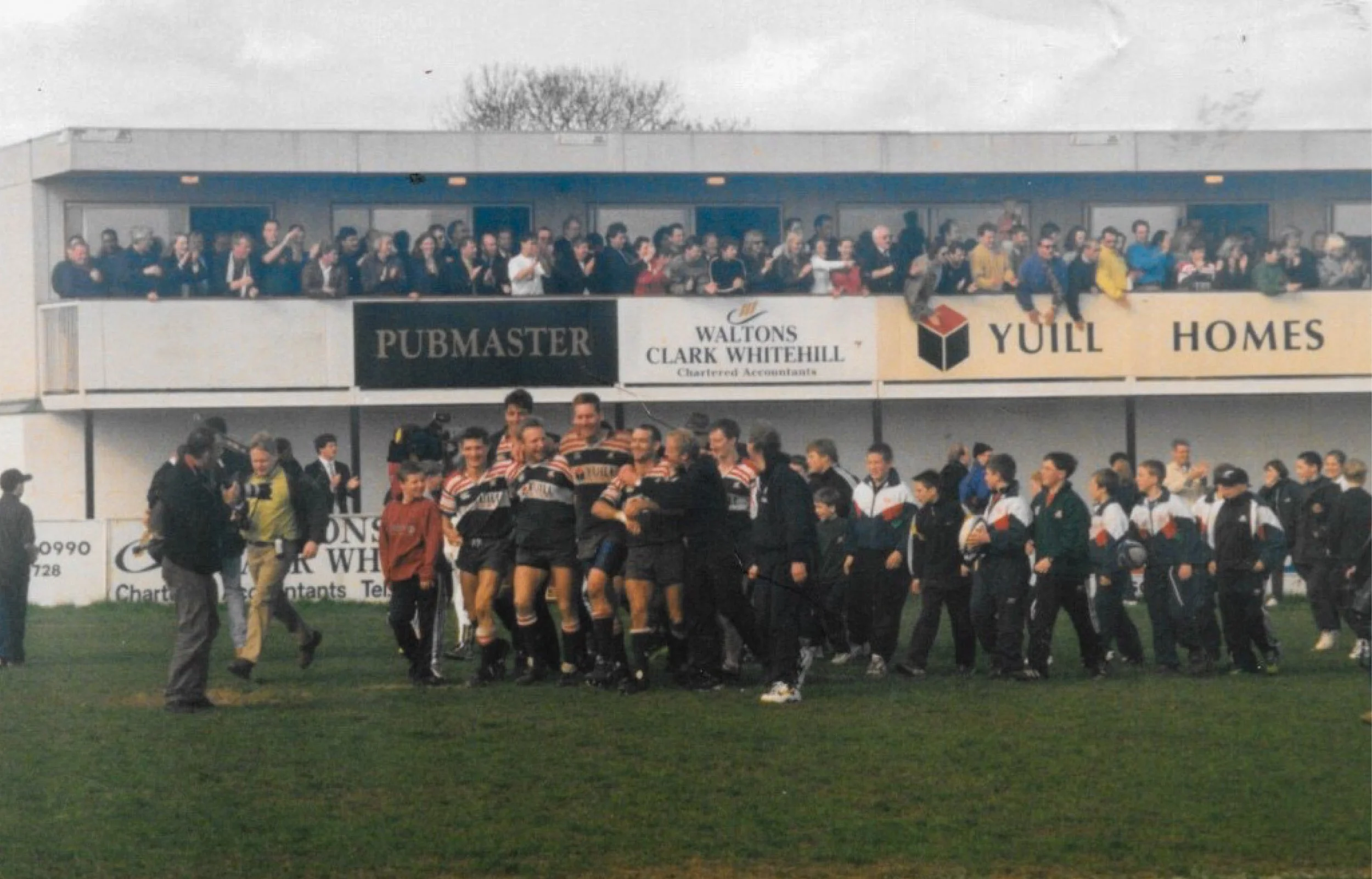Brierton Lane, West Hartlepool, 1970-1999
When the final whistle went in West Hartlepool’s 11-10 win against London Scottish in April 1998 little did any of those watching know it would be the home side’s last game there. Fewer still, could have imagined that twenty years later there would be sixty houses on the site.
Brierton Lane wasn’t West’s first home, it was their third. In 1886, West purchased a former Limestone Quarry from the Northeast Railway Company and developed Victoria Park where they played there until 1908 when the rugby club was disbanded in favour of Association Football. That side went on to become became Hartlepool United Football Club although, ironically, it was Victoria Park that West Hartlepool returned to play Premiership games in 1998/99.
After a few years of ambiguity, West returned to rugby and moved next door to what was called the Hartlepool Stadium but later became known as the Greyhound Stadium, where they stayed until 1970.
Brierton Lane was officially opened on 1st September 1970 by then RFU President Bill Ramsay and was commemorated by a game between West and a Dolphins select side.
The next 29 years saw virtually every senior club in the country visit Brierton Lane, as well as many international sides.
The introduction of the national knockout cup is regarded as the main reason that West made such rapid progress from one of a number of Durham sides of similar ability to one of the most prominent sides in the north.
West won the Durham County Cup the season before the move to Brierton Lane, and this gained them entry into the national cup, where they came to the attention of fixture secretaries up and down the country.
Very much a side of home-grown talent, West would get four sides out each week at the height of their success. The players were familiar to all – Boyd, Robinson, Cook – followed by Dixon, Stabler, Oliphant – and led the team into league and cup successes.
It also brought in international players – the Whetton brothers from New Zealand were a formidable pair and went on to play a part in the All Blacks first Rugby World Cup win – and the 1990s saw the arrival of Derrick Patterson and Rob Wainwright, followed by an influx of Welsh Players led by the Welsh Wizard Mark Ring.
The last side to grace the Brierton Lane pitch was a fully international one – Mike Brewer, the former All Black, was appointed director of rugby and put together a side of fellow Kiwis, together with players of Italian, French, Samoan and Tongan descent.
But West’s success may also have been its downfall. Brierton Lane wouldn’t have met the safety regulations required for Premiership Rugby and, with its position in the middle of a housing estate, it was unlikely that planning permission would have been granted if the improvements had been possible.
As a result, West departed for Victoria Park and Brierton Lane was lost, sold for development. Brierton Lane was loved by home and visiting supporters alike, an old-style ground in an era where stadiums were becoming the norm.
It was also the place where many a romance was forged at a Sunday night disco that is legendary. “What had the later generations lost?”, thought many a fan.
We will never know what might have been if West hadn’t been promoted that year, would Brierton Lane still be West’s home or was its demise inevitable due to its position?


